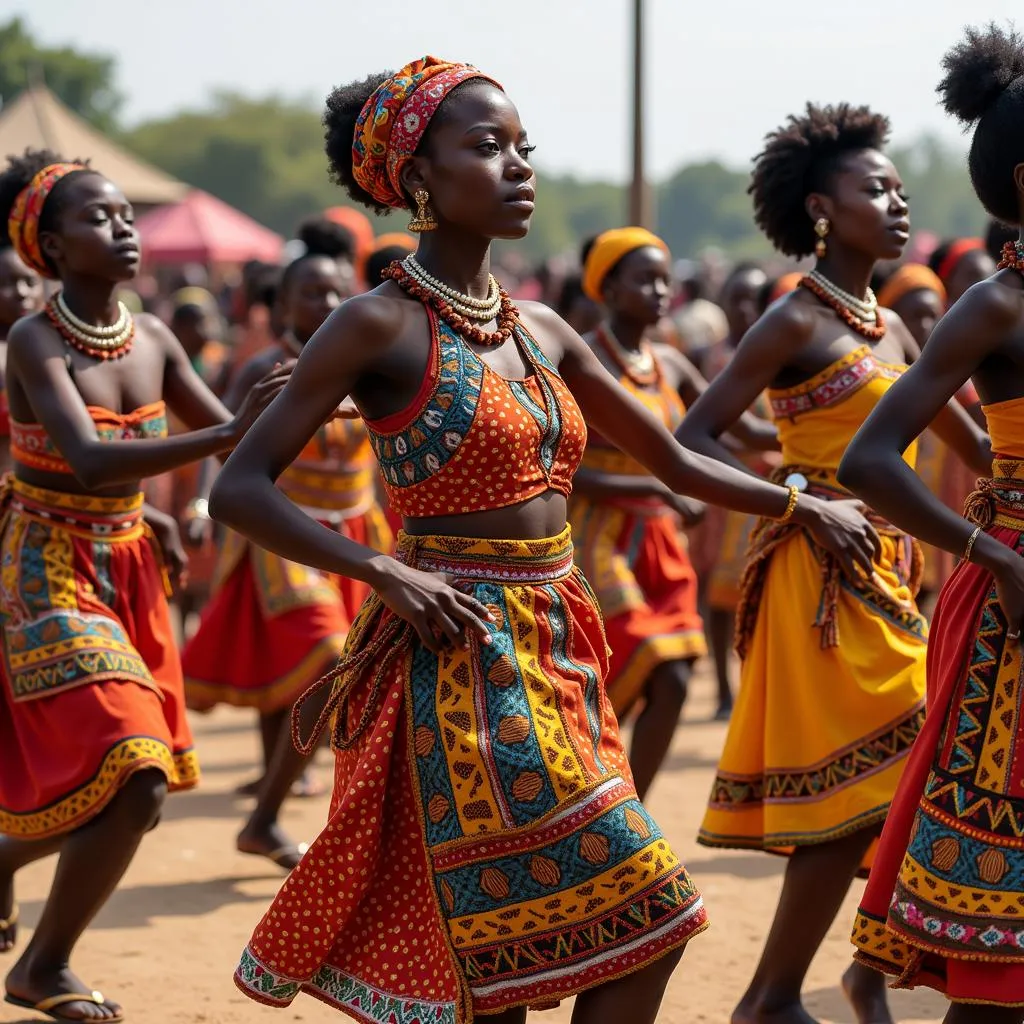Unveiling African Designs from Traditional Sources
African Designs From Traditional Sources offer a captivating glimpse into the continent’s rich cultural heritage. From vibrant textiles to intricate carvings, these designs tell stories of ancient traditions, spiritual beliefs, and the ingenuity of African artisans. This exploration delves into the diverse world of African artistry, revealing the beauty and significance behind these unique creations.
The Significance of Traditional African Designs
Traditional African designs are more than just aesthetic expressions. They are deeply symbolic, reflecting the values, beliefs, and history of various African communities. These designs often incorporate geometric patterns, abstract motifs, and representations of nature, each carrying a specific meaning. For instance, the spiral can represent growth and continuity, while animal motifs symbolize strength, courage, or specific clan lineages. Understanding these symbolic elements unveils the deeper narrative embedded within each design.
Traditional art forms also played a crucial role in social and religious ceremonies. Masks, sculptures, and textiles were often used in rituals, festivals, and storytelling, connecting individuals to their ancestors and spiritual beliefs. The creation of these artifacts was often accompanied by specific ceremonies and traditions, further enhancing their significance.
Exploring the Diversity of African Designs from Traditional Sources
African designs from traditional sources exhibit remarkable diversity, reflecting the vastness and cultural richness of the continent. From the intricate beadwork of the Maasai to the bold patterns of Ndebele art, each region boasts its unique artistic style. These designs are influenced by a multitude of factors, including local materials, climate, and historical interactions.
Textiles: A Tapestry of African Culture
African textiles are renowned for their vibrant colors, intricate patterns, and diverse weaving techniques. Kente cloth from Ghana, known for its geometric designs and symbolic colors, is a prime example. Mudcloth from Mali, featuring hand-painted symbols and natural dyes, offers another perspective on African textile traditions. These textiles are not merely garments but also serve as expressions of identity, status, and cultural pride. Easy African masks can be a great entry point to understanding the rich symbolism within African art. You can even create your own mask inspired by traditional sources, exploring the meanings behind various patterns and motifs. easy african masks
Sculpture and Carving: Shaping Narratives in Wood and Stone
African sculpture and carving traditions are equally diverse, encompassing a wide range of styles and materials. From the wooden masks of West Africa to the soapstone sculptures of Zimbabwe, these art forms capture the essence of African spirituality and storytelling. The artistry involved in creating these pieces is often passed down through generations, ensuring the preservation of traditional techniques and cultural narratives.
Pottery and Ceramics: Earth and Fire Transformed into Art
African pottery and ceramics are not merely functional objects but also beautiful expressions of artistic skill. Using traditional techniques passed down through generations, artisans create intricate designs and patterns on their creations. These designs often reflect local customs, beliefs, and the natural environment, making each piece a unique representation of its cultural origin. You can find more about the fascinating art of Lil Star and their connection to African heritage. african art lil star
Dr. Anika Nkosi, an expert in African art history, explains, “Traditional African designs are not static relics of the past. They are living traditions that continue to evolve and inspire contemporary artists.” These designs continue to hold great cultural significance, serving as a bridge between the past and the present. They also offer valuable insights into the unique perspectives and artistic traditions of diverse African communities.
Professor Kwame Asante, a renowned anthropologist, adds, “By studying African designs, we gain a deeper understanding of the continent’s rich history, social structures, and spiritual beliefs.”
Conclusion: Preserving and Celebrating African Designs from Traditional Sources
African designs from traditional sources offer a captivating window into the continent’s rich cultural tapestry. From vibrant textiles to intricate carvings, these designs embody the ingenuity and artistic brilliance of African artisans. By appreciating and understanding the significance of these designs, we can contribute to their preservation and celebrate the enduring legacy of African art. Explore the diverse world of African designs from traditional sources and discover the stories they tell. Learn more about the fascinating tapestry of African ethnic umbrellas by visiting this link. african ethnic umbrellas
FAQs
- What are some common motifs in African designs? Geometric patterns, animal representations, and symbols of nature are frequently found.
- How are traditional African designs used today? They continue to inspire contemporary art, fashion, and design, while also playing a vital role in cultural ceremonies.
- Where can I learn more about African designs? Museums, cultural centers, and online resources offer valuable information and insights.
For further assistance, contact us at +255768904061, email us at kaka.mag@gmail.com, or visit us at Mbarali DC Mawindi, Kangaga, Tanzania. We have a 24/7 customer service team ready to assist you.


